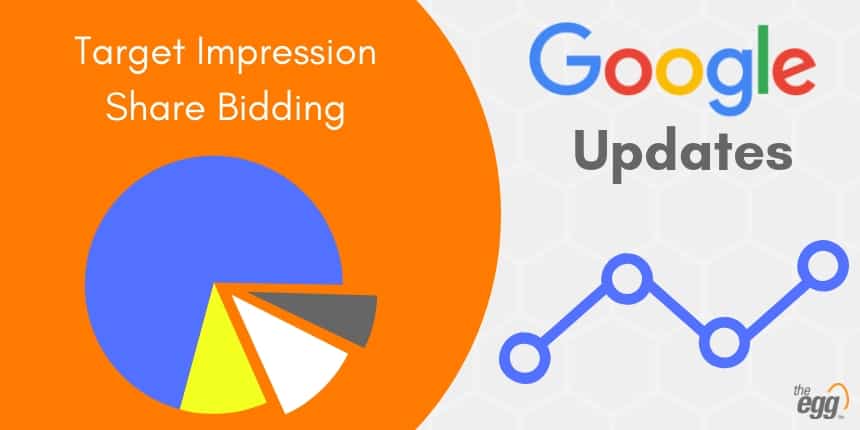Target impression share is a smart bidding strategy that automatically sets bids for where you decide you want your ad to appear on a SERP based on your impression share goals:
- Absolute top of page (position one)
- Top of page (above the organic results)
- Anywhere on page (above or below the organic results)
Here, we’ll explain how target impression share bidding works and its benefits for you as an advertiser.
But First…
If you’re unsure what type of automated bidding strategy is right for you, Google gives a good breakdown here.
How Target Impression Share Bidding Works
Target impression share bidding allows you to automatically set bids to help achieve your impression share goal across all Google search network campaigns. Because ad placement affects impression share—the higher your ad appears on a page, the more impressions you get—setting a higher impression share goal will let Google know that you want to appear higher on SERPs and are willing to pay a little extra for that position. Google explains:
“There are three options for the target impression share strategy, depending on where you want your ads to show: on the absolute top of the page, on the top of the page, or anywhere on the page of Google search results. Google Ads automatically sets your bids to show your ad, based on your placement settings.
For example, if you choose an impression share target of 65% on the absolute top of the page, Google Ads will automatically set your CPC bids to help show your ads on the absolute top of the page 65% of the total possible amount of times they could show.”
Target impression share is set at the campaign level and can be used as a standard strategy in a single campaign or as a portfolio strategy across multiple campaigns. Of course, you must ensure that your keywords make sense for your particular target impression share bidding campaign.
You can set a max bid cap to make sure you meet your budget. Of course, Google advises against setting this limit too low (they want to make more money, after all). But the truth is that if you do set the max bid too low, you may restrict the bids needed to reach your impression share goal. So, find your happy-medium.
The Benefits of Target Impression Share Bidding
Target impression share bidding allows you to set an impression goal and bid automatically based on ad placement to reach that goal. It takes out some of the manual labour in a campaign and allows you to maximize your reach while monitoring your budget. This is Google’s latest attempt to automate the bidding process, and its first targeting brand reach and awareness.
In a previous article, we discussed Google’s latest launch to report on these position metrics and get people to think more about actual position on page rather than average position of ads as a better indicator of position performance. The article can help you understand how Google looks at things, which in turn is how advertisers should look at things.
As Google makes constant updates to its metrics, ads, and algorithms, so too must brands and businesses stay up-to-date to maintain audience awareness and reach.



